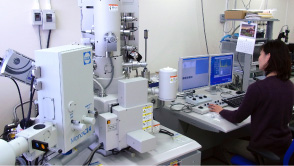
Self-assembly of the designed nanoclusters into superlattice formation will open up possibility for spontaneous construction of the new kind of electronic devices and nonlinear optics. The functionalities of nanocluster-assemblies are considerably governed by electron behavior (e.g. hopping or ballistic conduction). The metal atom-encapsulated silicon cage clusters, in addition, have a potential for application to novel solar cell devices, because both the p-type and n-type characters can be manipulated by substituting a metal atom at the center, and because the cluster can absorb whole of visible light (shorter wavelength 650 nm) due to the HOMO-LUMO gap of 1.9 eV. Moreover, organometallic sandwich clusters, consisting of transition metal and lanthanide atoms, possess ferromagnetic spin alignments and unusual large polarizability, and therefore they can be applicable to form novel optical devices and high-density magnetic memory units.








